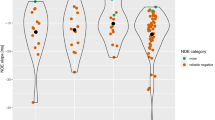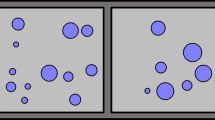Abstract
AN educated adult can tell which of two digits is the larger with virtually no uncertainty. By what process is this accomplished ? On the one hand, it is conceivable that such judgements are made in the same way as judgements of stimuli varying along physical continua. On the other hand, numerical judgements may be made at a different, less perceptual and more cognitive, level. For instance, the task may be one of memory access, each possible pair of numerals being stored with a corresponding inequality sign ; or perhaps some sort of digital computation is performed, such as counting the space between the two numerical values.
This is a preview of subscription content, access via your institution
Access options
Access to this article via ICE Institution of Civil Engineers is not available.
Subscribe to this journal
Receive 51 print issues and online access
$199.00 per year
only $3.90 per issue
Buy this article
- Purchase on SpringerLink
- Instant access to full article PDF
Prices may be subject to local taxes which are calculated during checkout
Similar content being viewed by others
References
Hemmon, V. A. C., Arch. Phil. Psychol. Sci. Meth., No. 8 (1906); Festinger, L., J. Exp. Psychol., 32, 291 (1943).
Lemmon, V. W., Arch. Psychol., 15, No. 94 (1927).
Welford, A. T., Ergonomics, 3, 189 (1960).
Author information
Authors and Affiliations
Rights and permissions
About this article
Cite this article
MOYER, R., LANDAUER, T. Time required for Judgements of Numerical Inequality. Nature 215, 1519–1520 (1967). https://doi.org/10.1038/2151519a0
Received:
Revised:
Issue Date:
DOI: https://doi.org/10.1038/2151519a0



